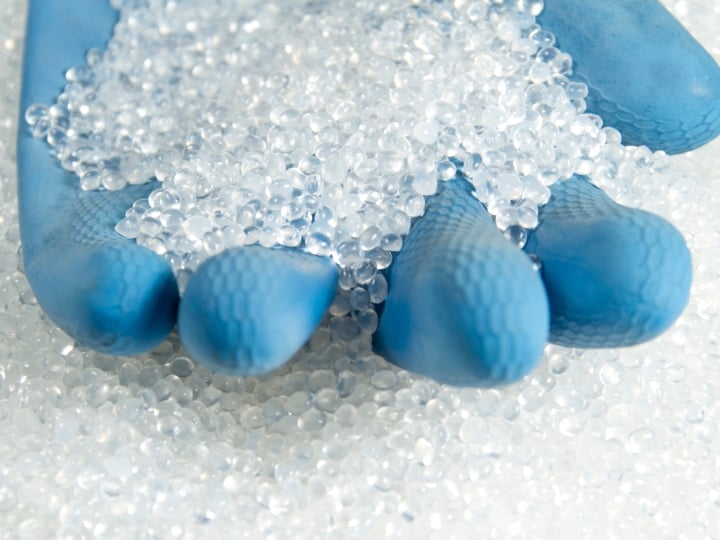Evaluating the Resistance of Plastics to Chemical Reagents ASTM D543
This test covers the evaluation of plastic materials for resistance to chemical reagents, simulating performance in potential end use environments. Chemical reagents can include lubricants, cleaning agents, inks, foods, or anything else that the test material may be expected to come in contact with. The test includes provisions for reporting changes in weight, dimensions, appearance and strength properties. Provisions are made for various exposure times, strain conditions and elevated temperatures.
Test Procedure:
Multiple specimens, at least 5, are typically used for each material/chemical/time/strain condition. Specimens can be weighed and measured prior to contact with the chemical reagent. To simulate end use stress in the test samples, strain jigs designed for ASTM izod bars or ASTM Type I tensile bars are used. Depending upon the type of contact anticipated for the test sample, the exposure to the chemical agent could be immersion, wipe, spray, or saturated gauze. The test samples are then sealed in a container, and either left at room temperature or placed in an oven. After the agreed upon period of time, the specimens are removed and evaluated for desired properties such as change in weight, appearance or tensile properties vs. controls. The most typical physical strength properties evaluated are tensile strength and elongation.
Specimen size:
Specimens are by the agreement of those concerned and may include tensile bars, disks, flex bars etc.
Data:
Reports often include visual evidence of decomposition, swelling, clouding, crazing, cracking, and/or change in physical properties such as tensile strength and elongation.
**Please note that this test description is intentionally generic in nature and aimed at providing a descriptive summary to enhance test understanding. Due to copyright restrictions, we are not able to provide copies of standards. Standards can be obtained from appropriate standards authorities.

